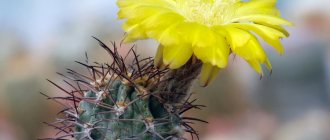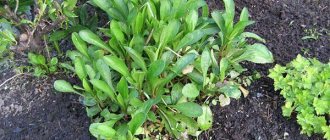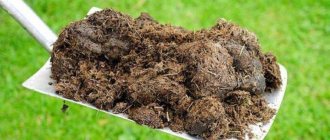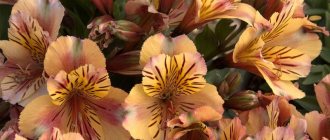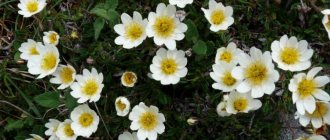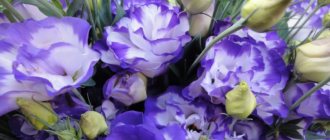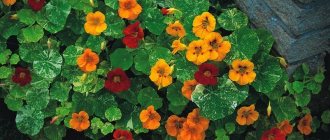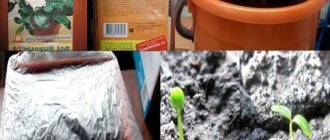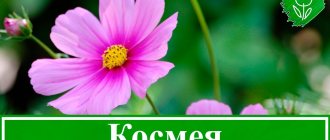Author: Elena N. https://floristics.info/ru/index.php?option=com_contact&view=contact&id=19 Category: Garden plants Published: February 21, 2019Last edits: November 07, 2020
- When to plant
- Growing conditions
- Nemesia floribunda
Nemesia (lat. Nemesia) is a genus of herbaceous plants and shrubs of the Norichnikov family, which includes approximately 50 species of annuals and perennials, most of which grow in the bush and coastal regions of South Africa. The plant received its scientific name in honor of the Greek goddess of retribution, Nemesis.
Planting and caring for nemesia
- Flowering: from June to frost.
- Planting: sowing seeds for seedlings - at the end of March, planting seedlings in open ground - at the end of May or early June.
- Lighting: bright sunlight.
- Soil: well-drained, moderately moist, neutral or slightly acidic soil of average fertility.
- Watering: regular, moderate, in hot weather and drought - more frequent and abundant.
- Fertilizing: 2-3 times per season with complex mineral or liquid organic fertilizers.
- Pinching: regular.
- Reproduction: seed.
- Pests: spider mites.
- Diseases: with excessive watering - fungal infections.
Read more about growing nemesia below.
Lunar calendar for planting seeds
The main thing where you need to start the growing process is by selecting the timing of planting the crop. This cannot be ignored, since very late sowing will delay color, and if sowing is too early, the plant will outgrow and when transplanted to the site, many specimens will die.
At the same time, the plant blooms quite quickly after the sprouts hatch (approximately 60-70 days).
The Earth's satellite affects plant crops and affects the quality of plants. If you plant seed material on favorable dates according to the moon, the flowers will be bright, strong and will 100% decorate the flower garden. Recommended days:
- March - 8-14, 17, 23-25;
- April - 7-13, 16, 22-24;
- May - 7-13, 16, 22-24.
However, these days are not a guarantee of high-quality results; no one has canceled the rules for caring for plant crops.
Unfavorable sowing dates: March 9, 19-21, 24
Botanical description
The nemesia plant reaches a height of 30 to 60 cm. The stems of nemesia are tetrahedral, branched, sometimes pubescent, bending over time under the weight of the inflorescences and linear or lanceolate, opposite, serrated along the edges of the leaves. Numerous axillary flowers, solitary or collected in apical inflorescences, consist of a tubular corolla with labiform limbs: the upper quadripartite and the lower dicotyledon. The color of the flowers is varied.
The fruit is a capsule with a large number of black elongated seeds in whitish arils. Nemesia seeds remain viable for up to 2 years.
Despite the fact that garden nemesia is represented by both annual and perennial species, in temperate climates it is grown as an annual crop.
- Video about the flowering of Buddleia David
Reviews with photos about nemesia
Kuznetsova Olga Pavlovna, 34 years old, Nizhny Novgorod
I sow nemesia on the site every year directly into the ground, planting is easy, seedlings appear quickly. The flower is beautiful, it’s a pity that it cannot withstand the winter. But the seeds are inexpensive, and re-germinating the crop every year is not a problem.
Ivanova Irina Sergeevna, 45 years old, Pokrov
I grow nemesia in the garden and in pots on the terrace. I like the hardiness of the culture, its bright flowering and simple care requirements. The plant perfectly decorates the lower tier of flower beds on the site.
Growing nemesia from seeds
Sowing seedlings
Nemesia is planted by seeds, cuttings and dividing the bush, but since the long roots of the plant are easily damaged when dividing, it is best to grow nemesia by seed seedlings.
Seeds purchased in a store or collected with one’s own hands are sown at the end of March in seedling containers filled with a loose, moisture-intensive substrate for flower crops, or in a mixture of peat and sand, on which a layer of snow is laid: on white snow, small black seeds are clearly visible and are easier to distribute over surfaces evenly.
The crops are covered with glass or transparent film and kept in a bright place at a temperature of 20 ºC, ventilated daily. The first shoots of nemesia should appear in 10-14 days.
Seedling care
With the beginning of mass germination of seeds, the container with the crops is exposed to bright, diffused light, and the temperature is lowered to 8-10 ºC. This is done so that the nemesia seedlings do not stretch. A week after the emergence of seedlings, the soil is watered with a solution of complex fertilizer in a weak concentration. Caring for seedlings consists of watering and carefully loosening the soil.
3-4 weeks after sowing, at the stage of development of the seedlings with two or three true leaves, the seedlings are planted in separate cups or pots, and the room temperature is maintained at 13 ºC. Make sure that the substrate in the cups does not dry out. Two weeks before planting in the garden, seedlings begin to harden.
Growing nemesia at home
Actually, nemesia is grown at home only during the seedling period, and then it is planted in open ground or transferred to a balcony or veranda.
- Winter propagation of conifers by cuttings - how to properly separate and root cuttings?
How to grow nemesia for landscaping a balcony, veranda or terrace? If you do not intend to keep nemesia in the garden, you can sow the seeds in February. The planting procedure and maintenance conditions are absolutely the same as for seedlings, but instead of picking into cups, nemesia is planted in containers or pots, which, when warmer, are taken out to the balcony, veranda or terrace.
Reproduction methods
Videos about nemesia note that the culture can be propagated in several ways. Most often, the plant is sown by seeds, but if desired, it is also possible to resort to cuttings. Do it as follows:
- Choose a young, healthy plant without buds or flowers.
- Using sharp scissors, cut off the top of the shoot up to 10 cm long.
- The lower leaf plates are removed, and the remaining ones are shortened by half.
- Wrap the cut of the cutting in a damp paper towel soaked in a solution of a growth stimulator.
- After the roots appear, the shoot is planted in a pot or in a temporary area in the garden.
It should be noted that when cuttings are taken, the crop takes root reluctantly. The division method is also not used for it - the roots are too sensitive and easily damaged. The main method of propagation remains growing from seeds.
Attention! Hybrid varieties are sown only with purchased grains. Own seeds are not suitable for propagation; even with good care, the flower degenerates.
Planting nemesia in open ground
When to plant
Nemesia seedlings are planted in open ground after warm weather has established, when the threat of frost has passed: at the end of May or at the beginning of June. An open, ventilated, sunny area with well-drained, moist soil of average fertility with a neutral or slightly acidic reaction is suitable for nemesis. Nemesia also grows well in light lacy partial shade.
How to plant
To plant seedlings, prepare holes of such depth that the root system of the seedling along with a lump of earth can fit in them. The distance between plants should be 20-30 cm, since nemesia bushes slightly fall apart. After planting and embedding, the seedlings are watered, and after the water is absorbed, the area is mulched to protect the soil from rapid evaporation of moisture.
Nemesia from seeds will bloom in late June or early July.
How to combine nemesia with other plants in landscape design
Nemesia, it seems, was simply created for decorating flower beds and flower beds; it is planted in rows along paths and in borders. It looks very organic when decorating alpine slides, as well as rockeries, and decorative spots on lawns. Suitable for cutting into bouquets.
Nemesia in landscape design
The plant goes well with other crops, such as:
- petunias;
- pansies;
- lobelia;
- marigold;
- ageratum.
Nemesia bushes, thanks to their bushy shape, as if their stems are slightly falling apart to the sides, look great in flowerpots, boxes and hanging baskets, when landscaping balconies and open verandas.
Caring for nemesia
Growing conditions
Planting and caring for nemesia is not labor intensive. In order for the plant to bush, the tops of its shoots are regularly pinched. During the season, you will have to water the nemesia, especially in dry weather, weed the weeds and loosen the soil around the bushes.
Nemesia flowers are fed 2-3 times during the season with complex mineral fertilizer, for example, Kemira Lux. Nemesia favorably accepts in open ground and organic fertilizers.
Pests and diseases
Due to the fact that nemesia loves moisture very much, it is susceptible to fungal diseases. To avoid damage to nemesia by fungi, water the plant moderately, allowing the top layer of soil to dry out, but if the plant still becomes sick, treat it with a fungicide solution.
- Crocuses - growing in the garden
Among insects, nemesia in open ground can suffer from spider mites that feed on the cell sap of plants, and if you find the thinnest sticky web on the bushes or drying and falling leaves, take immediate action: treat the plants and the soil around them with a solution of Akarina, Actellika, Karate, Fitoverma or any other acaricide.
Nemesia after flowering
When the first wave of flowering has subsided, the ends of the shoots of nemesia with faded inflorescences should be cut off, and soon, with proper care, new shoots will appear from the axils of the leaves, which will bloom after a while.
Diseases and pests
In dense plantings or in conditions of constant waterlogging of the soil and inaccurate watering, the development of rot and fungal diseases can often be observed in nemesia. At the first signs of rotting of plant parts, it is necessary to arm yourself with fungicides, but the most important thing is to find and immediately eliminate the cause. Affected parts of the plant or entire bushes must be urgently removed, check how dense the planting is to allow free air circulation, and temporarily stop watering.
Of the pests, the most common uninvited guest of nemesia is the spider mite, which feeds on its vital juices. Signs of damage are the presence of thin sticky webs, blanching of leaf blades and shoots, as well as their gradual withering and drying out. Of the recommended products, you can o, but for control you can use any specialized insecticidal preparations. After a week, the treatment must be repeated.
Types and varieties
Among the types of nemesia, there are those that are best grown in the garden, and there are types that can be used to decorate balconies and terraces. We present to you the most popular types and varieties of nemesia in gardening.
Nemesia floribunda
This is a plant reaching a height of 40 cm, the shoots of which are crowned with delicate small pale blue flowers. This species, unfortunately, can rarely be found in culture, although interest in it has been growing over the years.
Nemesia versicolor
A South African species of annual plants with highly branched thin stems up to 25 cm high and medium-sized flowers. Nemesia variegated served as the basis for the development of many hybrids. The most famous varieties:
- Blue Bird is a plant with bright blue flowers with a yellow or white spot on the lip;
- Edelblau - the flowers of this variety are the same color as those of the forget-me-not.
Nemesia strumosa
It is a highly branched annual 35-40 cm high with oval sessile lower leaves and linear upper leaves. The flowers of plants of this species are irregularly shaped, swollen, without spurs, up to 25 mm in diameter, with a drooping throat, red, pink, orange or yellow in color, there are varieties with variegated flowers. The species has been in cultivation since 1892.
The best varieties of the species are:
- Aurora is a plant up to 30 cm high with large scarlet-white flowers;
- Fanfair - a variety with cream and yellow flowers;
- Sparklers - nemesia with two-three-color flowers;
- Fire King - a variety up to 30 cm high with fiery red flowers;
- National Ensign is a well-known variety with red and white flowers.
Hybrid nemesia (Nemesia hybrida)
It combines all varieties of hybrid origin from crossing Nemesia zombie and Nemesia variegated. As a rule, these are annuals from 30 to 60 cm in height with elongated, almost lanceolate leaves, crenate along the edge. Irregularly shaped, large flowers up to 2 cm in diameter with a two-lipped corolla are collected in apical racemose inflorescences.
Hybrid nemesia usually goes on sale in variety mixtures that differ in plant height. For example:
- nemesia Triumph - varieties of various colors up to 15 cm high;
- nemesia Carnival - plants 18-20 cm high in various colors.
Some popular varieties of hybrid nemesia also go on sale:
- nemesia King's Mantle (Cardinal) is a variety that blooms profusely with bright blue flowers with long spurs. The center of the corolla is white, along the edges of the petals there is a blue border;
- Tumbelina is a new variety 15-20 cm high with lavender-blue flowers about 3 cm in diameter.
Sansatia (Nemesia ampelous)
It is a triploid interspecific hybrid obtained in 2009 by German breeders by crossing a perennial and an annual species of nemesia. There are only eight ampel varieties so far. Their color resembles exotic fruits, which is why they received the following names: Lemon, Coconut, Peach, Blackberry, Banana, Pineapple, Mango and Cranberry, and the most popular of these varieties are Lemon, Coconut, Banana, Pineapple and Cranberry, and Mango, Blackberry and Peach have erect peduncles.
Propagation of nemesia by seeds and growing seedlings for your own plot
Such a beautiful flower as nemesia, regardless of the variety, is propagated by seeds, which can be purchased in specialized stores. There are several nuances that must be observed in order for the plant to grow healthy and strong. The fact is that this type of garden flowers has a tap root, which is not difficult to damage when replanting, so there should be one plant, and if possible, it is better to immediately plant the seeds in the ground. Reproduction and cultivation of nemesia by seeds begins with finding the answer to the question of when to sow it correctly. So, the best time for this is in 2022 from February 10 to 22. Let's figure out how to grow healthy seedlings for your plot and see photos of the finished results.
First of all, as mentioned earlier, special attention should be paid to the root system and the fact that it should not be damaged. To do this, the plants are planted in different pots. That is, you need to manage and plant small, very light seeds in different containers. But, you can use a little trick and a couple of improvised means that will definitely be at hand at the beginning of March.
In order to avoid the accumulation of nemesia, you can lay a small layer of snow on the ground. Since the soil should be very moist, almost muddy snow will not harm, but will only draw the seeds to the desired depth when it melts. Also, in order not to damage the seeds, you can take a dull pencil, moisten its tip in water and carefully use it to place the seeds on the ground in the required order.
As for the soil, it should be special with a small amount of sand and humus. This mixture should be loosened as much as possible and moistened with plenty of water.
The first shoots, when planted in closed ground, will appear within 1 week, but if the seeds were sown directly into the soil in a flower bed, then usually the first shoots can be seen within 14 days. To avoid the death of nemesia, you should plant it in the flower garden only after you are sure that there will be no more frosts this season. The temperature at which the first shoots can be seen within 1 week is at least 20 degrees.
In order for a beautiful and healthy plant to ultimately grow, it is necessary, in fact, to follow only two very important rules of care: timely watering and lighting. At the initial stages of development, of course, it is better to spray nemesia with a spray bottle. As for lighting, you need a sunny place in which to place pots with future ornamental plants covered with glass or cling film to decorate the area or balcony.
